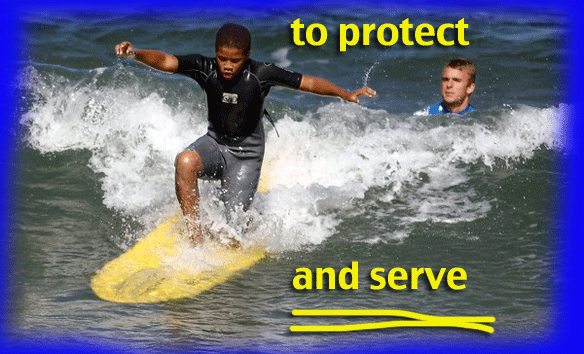
Everyone with any sense who has made a study of successful law enforcement agrees with the virtues of community policing. If a community knows its police officers as people, and vice versa, both groups benefit—as does public safety.
Yet for decades there have been only brief, token gestures in the direction of the strategy in Los Angeles, in part because the city is so physically vast, with an officer-to resident ratio lower than ideal, thus police were pretty much confined to patrol cars, and the infamous Command and Control model held sway.
There have been concerted efforts to move away from that model under Bill Bratton, and now even more under Chief Charlie Beck. A case in point is illustrated in a story by the LA Times’ Joel Rubin who writes about a new kind of community outreach from cops to kids in the Southeast division that is definitely something to cheer about.
Here’s a clip:
As morning broke over the city Monday, cops assigned to the Los Angeles Police Department’s Southeast Division went about their normal routine, patrolling the streets. There was, as always, plenty to do. The division’s 10-square-mile area has some of the highest crime and poverty rates in the city and is home to 120 documented gangs and three of the city’s roughest housing projects.
But 18 miles and a world away, Officer Scott Burkett was working a very different beat. Having traded his uniform for a wetsuit, the 15-year LAPD veteran was in the water at Torrance Beach with about two dozen kids from the Watts-area neighborhood that Southeast patrols, teaching them to surf.
Surfing as crime-fighting strategy?
“It’s about changing the relationship between the Watts community and the LAPD,” said Southeast Capt. Phil Tingirides, a first-time surfer who got in the water Monday as well. “To do that, we’ve got to get the kids, and we’ve got to get them early.”
In recent years, the violent crime rates in Southeast were too high to allow officers to work on anything but patrol, gang units and other traditional assignments, Tingirides said. But in 2009, after a few years of declines in crime, he asked Burkett to start a youth activities program.
“We got to the point where we felt we could move away from just violent crime suppression and make a move toward this sort of thing, which is about trying to impact the future instead of just throwing cops up against every crime that occurs.”
It’s not exactly revolutionary thinking: For years, police departments have been trying with varying success to implement so-called community-based policing strategies. But to try it in a place like Southeast, where distrust toward the police historically runs deep, and to commit to it so heavily — Tingirides said he has 13 officers working full time on several community-relations programs — speaks volumes.
Read the rest. It’ll cheer your day.
CORY MAYE’S HOMECOMING FROM DEATH ROW
At 9 p.m. on the day after Christmas, 2001, Cory Maye, a 21-year-old father had just put his 18-month-old daughter to bed when a group of armed men broke down his door. Assuming he and his daughter were about to be killed, the father shot at the men in the dark. One of the bullets found its target with fatal consequences.
What Maye did not know is that the intruders were police serving a search warrant. However, they had the wrong house. They were looking for a drug dealer who lived next door.
When he heard the cops shout “Police,” Maye dropped the gun and surrendered immediately.
While Maye had no criminal record he had killed a police officer. He was convicted of murder and was sentenced to death.
One of my new favorite criminal justice writers, Radley Balko, covered the case in 2006 for Reason Magazine.
Now Balco is writing for the Huffington Post and in this story he covers Maye’s release and homecoming after a decade in prison. And in this story Balco explains what came in between.
Photo by Luis Sinco/Los Angeles Times
